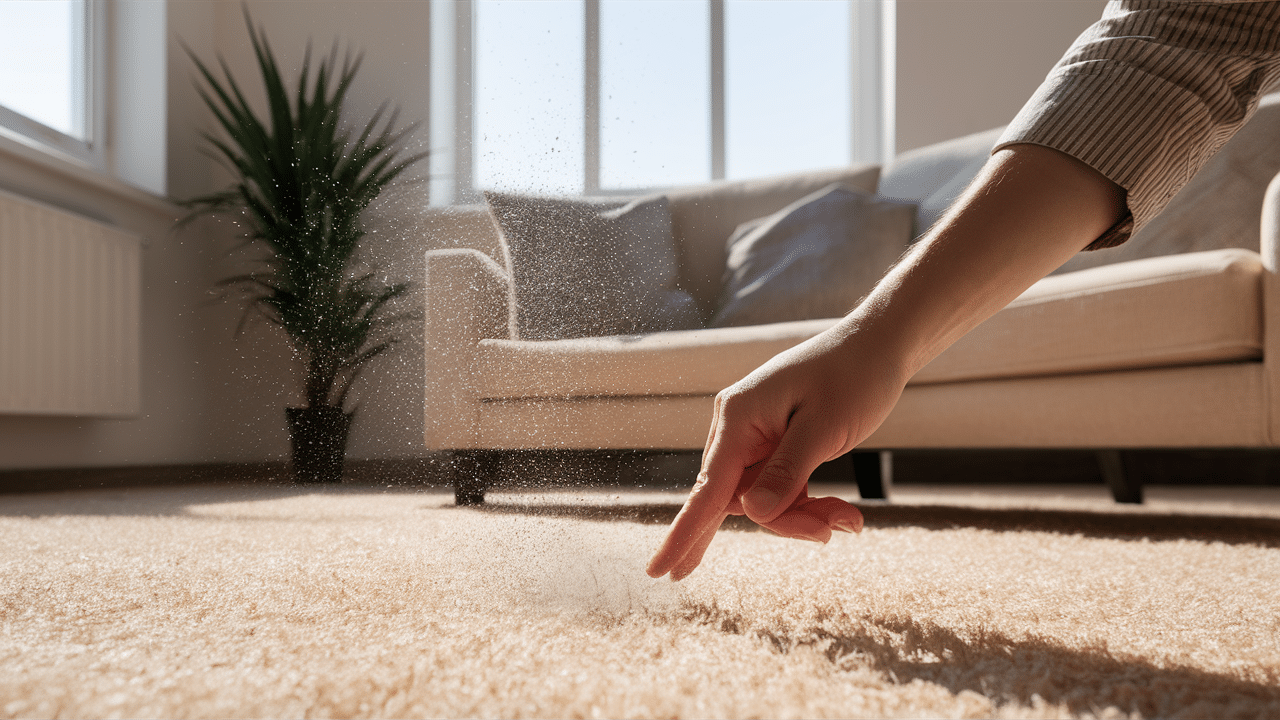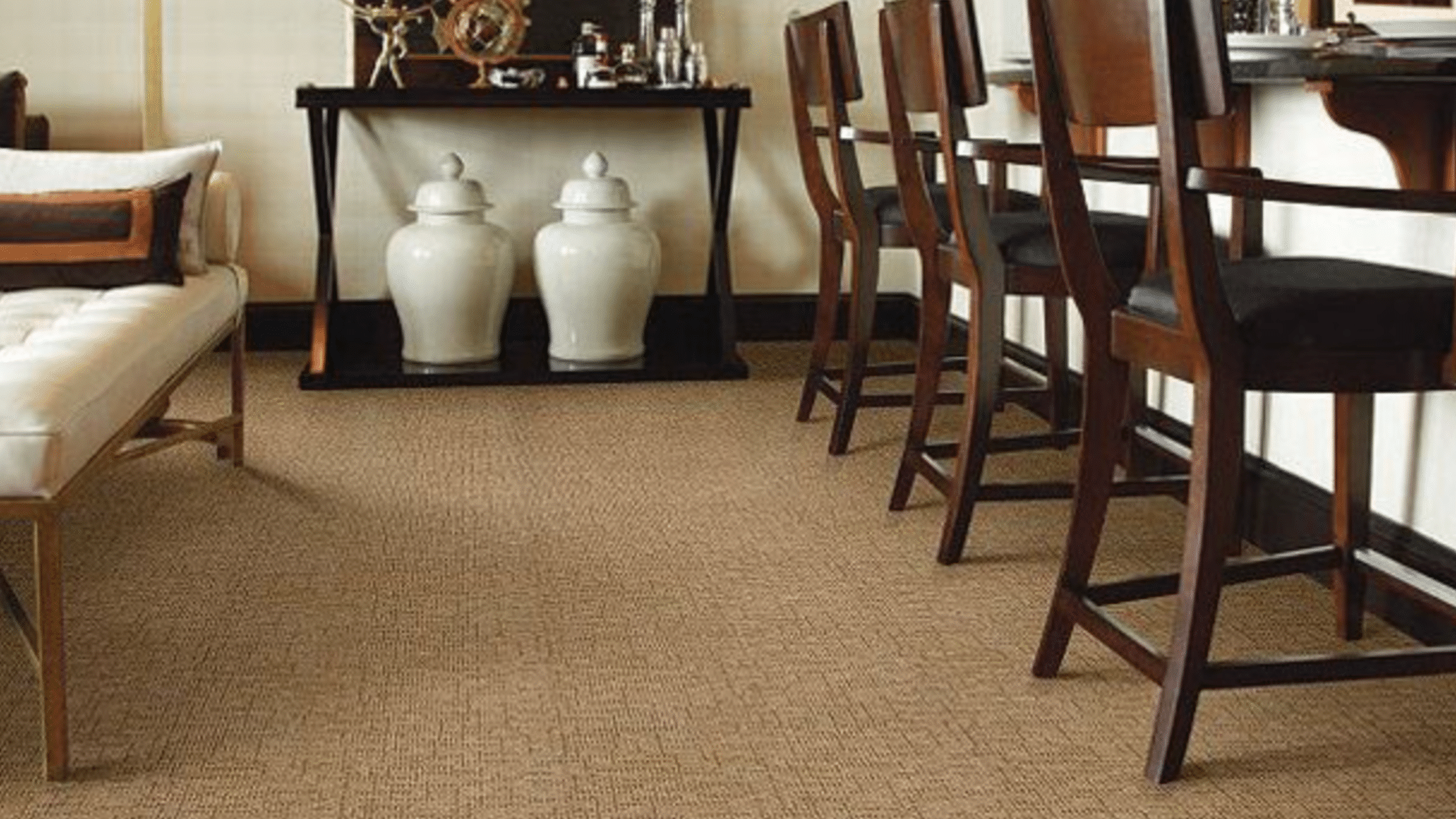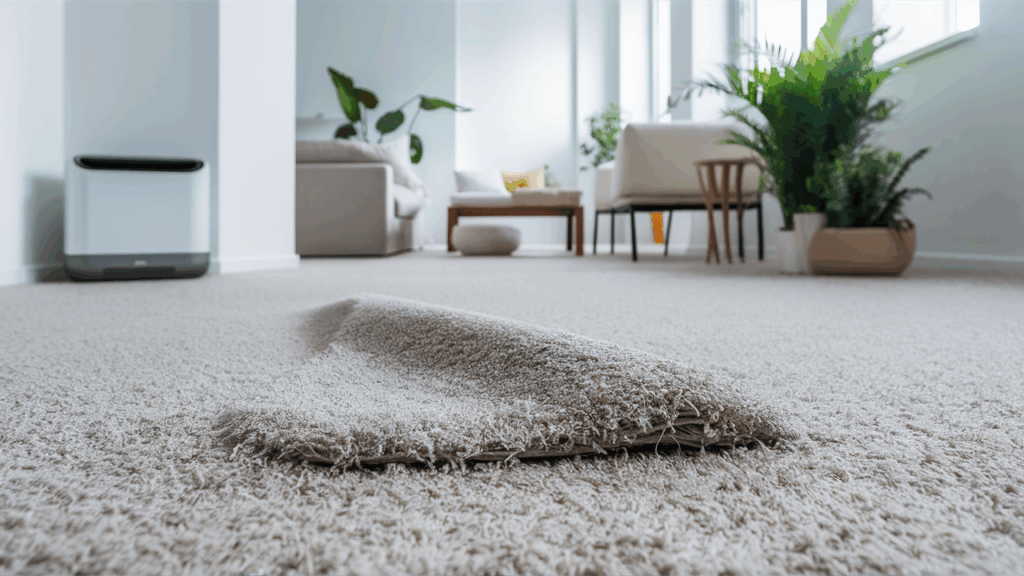I’ve always loved the feel of carpet under my feet, but dealing with allergies made it tricky. Dust, pollen, and pet hair can become trapped deep within the fibers, making it difficult to breathe and making relaxation even harder.
Over time, I realized that the type of carpet you choose can make a big difference.
Some trap allergens, while others are easier to keep clean and fresh. If you’re like me and want the comfort of carpet without the sneezing and stuffy nose, you’re in the right place.
In this blog, I’ll share the best carpet types for allergy relief and a few easy tips to keep them clean. You don’t need fancy tools or a big budget – just the right info.
Let’s take a closer look at what works, what to avoid, and how to make your home feel better every day.
Why Carpets Matter for Allergies?

Carpets are soft and warm under your feet. They make a room feel cozy. But if you have allergies, carpets can cause trouble. That’s because carpets often trap things like dust, pet hair, pollen, and even mold. These tiny particles become stuck in the fibers and don’t easily dislodge.
Every time you walk on the carpet, sit on it, or even vacuum without a good filter, those allergens can go back into the air.
This can cause your nose to run, your eyes to itch, or trigger an asthma attack. Some people might not even realize their carpet is part of the problem.
The type of carpet you choose matters. Some carpets trap more dust than others. Some hold in moisture, which can lead to mold and mildew. That’s why it’s essential to choose a carpet that’s easy to clean, doesn’t retain allergens, and dries quickly.
Making informed choices can help you enjoy the comfort of carpet without exacerbating your allergies.
What to Look for In an Allergy-Friendly Carpet?

Not all carpets are the same, especially when it comes to allergies. If you or someone in your household has allergies, it’s essential to select a rug that helps keep the air cleaner and retains fewer allergens. The key features to look for are:
1. Low Pile Height: Carpets with short fibers (called low pile) are better for allergies. They don’t trap as much dust, pollen, or pet dander. Low pile carpets are also easier to vacuum and dry faster if they get wet.
2. Tight Weave: A tightly woven carpet has fewer gaps for dirt and allergens to hide. The tighter the weave, the less space there is for things like dust mites or mold to settle in. This makes the carpet easier to keep clean over time.
3. Synthetic Materials: Carpets made from synthetic fibers, such as nylon or polyester, are often superior to those made from natural materials like wool. They don’t hold moisture as easily and are less likely to grow mold or attract dust mites.
4. Hypoallergenic Labels: Some carpets are made with special features that help fight allergens. Look for labels that say “hypoallergenic” or “antimicrobial.” These carpets are treated to resist dust mites, mold, and mildew, which can help reduce allergy symptoms.
5. Low VOCs: New carpets can give off fumes from chemicals known as VOCs (volatile organic compounds). These can make allergies worse or trigger headaches and asthma. Pick carpets labeled low-VOC or Green Label Plus to keep indoor air cleaner
Top Carpet Types for Allergy Relief
Allergies can be affected by the type of carpet in your home. Some materials and styles are better at keeping allergens away. These are the best carpet types that help keep dust and allergens low:
1. Nylon Carpet

Nylon is one of the best carpet choices for people with allergies. It has a tight fiber structure, which means it doesn’t hold on to dust, pollen, or pet dander as much as other types. The surface is smooth, so dirt tends to accumulate closer to the top and is easier to vacuum.
Nylon is also very strong and long-lasting, making it ideal for homes with children and pets. Many nylon carpets come with built-in stain resistance, which helps keep them clean longer.
Additionally, I’ve found that it dries quickly after cleaning, making it less likely to develop mold or mildew. If you want a carpet that can withstand high traffic and still be allergy-friendly, nylon is a smart choice.
2. Polyester Carpet

Polyester is another good option for allergy relief. It’s made from synthetic fibers that don’t soak up water, so it helps prevent mold and mildew. That’s a significant advantage for individuals who are sensitive to musty smells or damp environments.
Polyester is soft underfoot and comes in lots of colors and styles. It’s also more affordable than nylon, making it a good choice for those on a budget.
While it’s not quite as tough as nylon, it still works well in bedrooms or rooms with light to medium foot traffic. To keep it allergy-safe, vacuum it frequently and avoid allowing moisture to sit on it for extended periods.
3. Olefin Carpet (Polypropylene)

Olefin, also known as polypropylene, is a moisture-resistant carpet fiber that performs well in areas where spills or high humidity are common. It’s often used in basements, playrooms, and home offices.
Olefin resists mold and mildew, making it a solid choice for controlling allergies. It also doesn’t absorb water or odors. While it’s not as soft or strong as nylon or polyester, it can still be a suitable choice for low-traffic areas.
Cleaning olefin is easy, and its stain resistance makes it a low-maintenance choice. If you’re looking for a simple, allergy-friendly carpet for a quiet room, olefin may be all you need.
4. Carpet Tiles

Carpet tiles are small square pieces of carpet that fit together like a puzzle. The best part about them is that you don’t have to replace the entire carpet if one spot gets dirty or damaged—you can swap out one tile.
Most carpet tiles are made from synthetic, low-pile materials, which makes them easy to clean and better for allergy control. They are also great for families because they handle wear and tear well.
Carpet tiles are well-suited for use in playrooms, offices, and even bedrooms. Their flexibility and easy care make them a favorite for allergy-friendly homes.
5. Hypoallergenic Carpet Brands

Some carpet brands produce products specifically designed for allergy relief. Look for brands that offer low-VOC, hypoallergenic, and green-certified options.
Shaw, Mohawk, and FLOR are a few good brands to check out. They produce carpets that are tested for lower allergen levels and safer air.
Carpet Styles that Work Well for Allergies

Choosing the right style of carpet is just as important as picking the right material. Some carpet styles hold on to dust and allergens more than others. The right style can make cleaning easier and help keep the air in your home fresher.
1. Cut Pile Carpet
This style has straight fibers that are cut at the ends. Because the fibers stand up and don’t loop, there are fewer places for dust and dirt to hide. It’s also easier to vacuum. Cut-pile carpets are a smart choice if you want something soft that still helps with allergy control.
2. Loop Pile Carpet (Tight Loops Only)
Loop pile carpets, my personal favourite, feature uncut loops of fiber, creating a bumpy surface. Some loop carpets can trap more allergens, especially if the loops are large or loose. However, if the loops are tight and low, as in many Berber carpets, they can still provide effective relief for allergies, especially if made from synthetic fibers such as nylon or olefin.
3. Low Pile Carpet
Low-pile carpets are the ideal choice for individuals with allergies. They have short, flat fibers that don’t hold as much dust or pet dander. These carpets are easy to clean, dry quickly, and are less likely to cause mold or mildew problems.
What to Avoid When Choosing Carpet?
Not all carpets are suitable for individuals with allergies. Some look soft and coz,y but can actually make allergy symptoms worse. They may trap dust, hold in moisture, or be hard to clean. To keep your air fresh and your home comfortable, it’s helpful to know which carpet types and features to avoid:
1. High Pile Carpet Carpets with tall, fluffy fibers hold a lot of dust. They are harder to vacuum and take longer to dry. Avoid shag and plush carpets if you have allergies.
2. Natural Fiber Carpet Wool, jute, and sisal are natural materials. They may seem like a healthy choice, but they can hold moisture and grow mold. Wool can also attract dust mites. Stick with synthetic options for fewer allergy problems.
3. Carpets with VOCs Some new carpets release harmful chemicals called VOCs (volatile organic compounds). These can make allergy symptoms worse. Look for carpets labeled as low-VOC or Green Label Plus certified.
How to Keep Your Carpet Allergy-Friendly?
Picking the right carpet is only the first step. To keep allergies under control, you also need to care for your carpet properly. Regular cleaning and a few easy habits can make a big difference. Some simple tips to help keep your carpet fresh and allergy-friendly:
- Vacuum Often: Use a vacuum with a HEPA filter. Vacuum at least twice a week. Go slowly to pick up dust and pet hair. Don’t forget to vacuum corners and edges.
- Use a Carpet Cleaner: Steam cleaning helps remove deep dirt and allergens. Do this every few months. Use allergy-friendly cleaners that don’t have strong smells or harsh chemicals.
- Keep Humidity Low: Dust mites and mold thrive in damp environments. Use a dehumidifier to keep the air dry. Aim for humidity under 50%.
- Take off your Shoes: Shoes bring in pollen, dirt, and germs. Ask everyone to remove their shoes at the door. Use indoor slippers or go barefoot instead.
- Brush Pets Often: Pet hair and dander can stick to carpets. Brush your pets outside or in one spot. Clean their bedding regularly to keep allergens at a low level.
- Use Air Purifiers: An air purifier with a HEPA filter can help catch allergens in the air. Use it in rooms with carpet to keep the air cleaner.
Best Carpet Padding for Allergies
| Tip | Why It Matters |
|---|---|
| 1. Choose Antimicrobial Padding | Prevents mold, mildew, and bacteria growth—ideal for damp areas or pet-friendly homes. |
| 2. Avoid Rebond or Recycled Padding | Often traps dust and moisture, increasing the risk of mold and allergens. Solid foam is a better choice. |
| 3. Look for Low-VOC Options | Reduces exposure to chemicals that may worsen allergies—look for Green Label Plus. |
| 4. Dense & Moisture-Resistant | Keeps carpets stable and easier to clean, while preventing mold growth underneath. |
When to Replace Your Carpet?
Carpets don’t last forever, and older ones can exacerbate allergies. If your carpet is more than 10 years old, it may be harboring dust, dirt, and allergens deep within its fibers, despite regular cleaning.
Musty smells, mold spots, or damp areas are signs of mildew, which can trigger allergic reactions and symptoms. If your carpet has strong odors that won’t go away or looks worn, frayed, or flat, it may be time for a replacement.
A new, low-pile, allergy-friendly carpet can make your home feel fresh and help you breathe easier.
Conclusion
Living with allergies can be tough, but the right carpet can make a big difference. You don’t have to give up comfort to keep your home clean and safe.
By selecting a low-pile carpet made from synthetic fibers like nylon or polyester, you can minimize the accumulation of dust and dander in your home. Look for carpets labeled as hypoallergenic and low-VOC to help keep your air fresh.
Cleaning is often just as important as picking the right carpet. Use a vacuum with a HEPA filter, steam clean periodically, and maintain a low humidity level.
Don’t forget about carpet padding – it should be dense, moisture-resistant, and safe for indoor air.
If your carpet is old, worn, or smells bad even after cleaning, it might be time to replace it. Small changes can lead to big relief. With the right choices, your home can be soft under your feet and gentle on your allergies, too.

